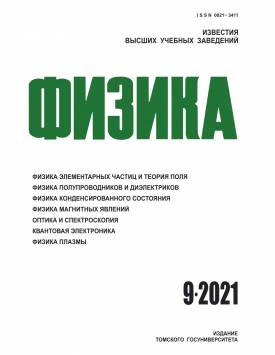Numerical simulation of multi output radar orthogonal waveform based on chaos optimization algorithm
Aiming at the problems of low probability of interception and poor anti-jamming performance of multi output radar, the numerical simulation of orthogonal waveform of multi output radar based on chaos optimization algorithm is proposed. Firstly, chaotic frequency coding is applied to multi output radar signal, and different frequency modulation is applied to different sub pulse. At the same time, in view of the low efficiency of numerical simulation algorithm in large space and high dimension optimization, GASA algorithm is used to increase the diversity of chaotic optimization algorithm process. According to the specific working mode, the initial phase of each cycle of multi output radar orthogonal waveform is obtained, and the number of numerical simulation of multi output radar orthogonal waveform is established Model. The experimental results show that the proposed method can improve the radar energy utilization and the signal-to-noise ratio of the echo signal, allocate the transmitting energy reasonably, and keep the structural stability of LFM signal frequency changing continuously with time.
Keywords
numerical simulation,
chaos optimization algorithm,
MIMOAuthors
| Caifeng Sun | College of Physics and Electronic Science, Shanxi Datong University | cfsun0414@126.com |
| Miguel A. López | Polytechnic School of Cuenca, Department of Mathematics and Institute of Applied Mathematics in Science and Engineering (IMACI), University of Castilla-La Mancha | mangel.lopez@uclm.es |
Всего: 2
References
Hu X., Feng C., Wang Y., et al. // IEEE. Trans. Geoence Remote Sens. - 2020. - V. 58. - No. 4. - P. 2898-2914.
Zhang Q., Gong Y., and Chen Y. // J. Beijing University of Technology. - 2019. - V. 28. - No. 01. - P. 141-149.
Zhou B.C. and Zhang H.L. // Comp. Simul. - 2018. - V. 35. - No. 05. - P. 233-236.
Ge Y., Liu Z., Sun H., et al. // Energy. - 2018. - V. 147. - No. 15. - P. 1060-1069 (2018).
Reihs B., Vananti A., and Schildknecht T. // Adv. Space Res. - 2020. - V. 66. - No. 2. - P. 426-443.
Yan J., Gou Y., Zhang S., et al. // IEEE. Trans. Plasma. Sci. - 2019. - V. 12. - No. 3. - P. 3015-3025.
Feghhi R., Oloumi D., and Rambabu K. // IEEE. Trans. Microwave. Theory. - 2020. - V. 1. - No. 99. - P. 1-1.
Orouskhani M., Teshnehlab M., and Ind M.A. // J. Mach. Learning and Cybernetics. - 2019. - V. 10. - No. 8. - P. 1931-1959.
Byrd A.D., Palmer R.D., and Fulton C.J. // IEEE. Trans. Geosci. Remote. Sens. Lett. - 2020. - V. 58. - No. 4. - P. 2796-2808.
Bing L., Wang Y.P., et al. // Water. Resour. Manag. - 2018. - V. 31. - No. 3. - P. 1-30.
Li J., Cai J., and Qu K. // AIAA. J. - 2018. - V. 56. - No. 3. P. 1-13.
Wang X., Li H., He L., et al. // Int. J. Heat. Mass. Transfer. - 2018. - V. 127. - No. 1. - P. 1114-1127.
Wu Y., Zhao H., Zhang C., et al. // Energ. - 2018. - V. 151. - No. 15. - P. 79-93.
Lin Y.S. and Lan K.S. // Analog. Integr. Circuit. Signal. - 2020. - V. 103. - No. 3. - P. 435-450.
Escribano F.J., Saez-Landete J., and Wagemakers A. // IEEE. Trans. Commun. - 2019. - V. 67. - No. 1. - P. 590-598.
Liu X.F., Nie W., Zhou W.J., et al. // Process. Saf. Environ. Prot. - 2020. - V. 136. - No. 12. - P. 353-370.
Wang R., Kang W., Liu G., et al. // IEEE. Access. - 2020. - V. 8. - No. 4. - P. 33631-33643.
Ahmad R., Farooqi A., Zhang J., et al. // Appl. Math. Nonlinear Sci. - 2019. - V. 4. - No. 1. - P. 255-266.
Duran A. // Appl. Math. Nonlinear Sci. - 2020. - V. 3. - No. 2. - P. 627-648.
Ilhan E. and Onur Klymaz I. // Appl. Math. Nonlinear Sci. - 2020. - V. 5. - No. 1. - P. 171-188.
Shvets A. and Makaseyev A. // Appl. Math. Nonlinear Sci. - 2019. - V. 4. - No. 1. - P. 1-8.
